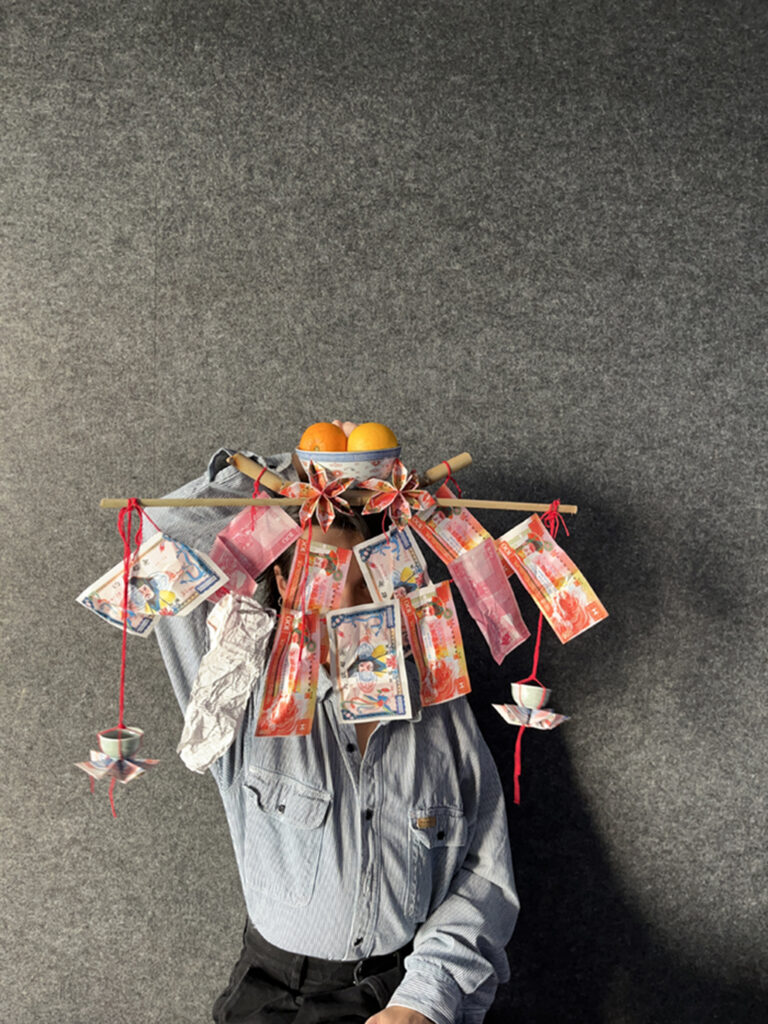
How does one acknowledge a history. complex, disjointed, and in many ways inaccessible through the medium of the requiem? To grapple with myself as the coalition of these varied histories, self-portraiture lends itself to an idealized, manicured and curated image – not free from the biases and personal aspirations with respect to the commissioner’s notion of self worth and image. As means to connect myself to the related or distinct death rituals of my predecessors, I clothe myself, adorned in objects personal in relation to the life histories of my grandparents, and distant in their ritualistic or spiritualistic employment. Objects such as jos paper, receipts, incense, rosaries, and fabric are used, although not as intended. I dress myself in artifacts of culture and memory, precariously and intentionally supporting said artifacts while subsequently obscuring parts of my body. In doing so, I allude to both artifice, and the ways I am able to cherry-pick contested objects of identity from a position of privilege. I speak to an unstable and chimeric network of relationships and exchange.